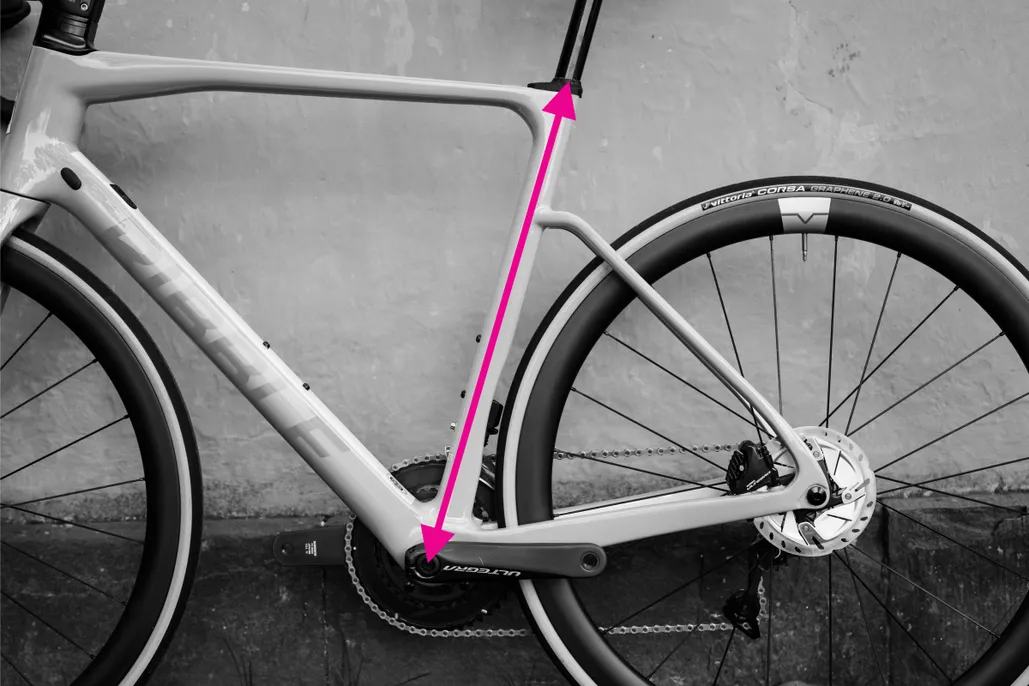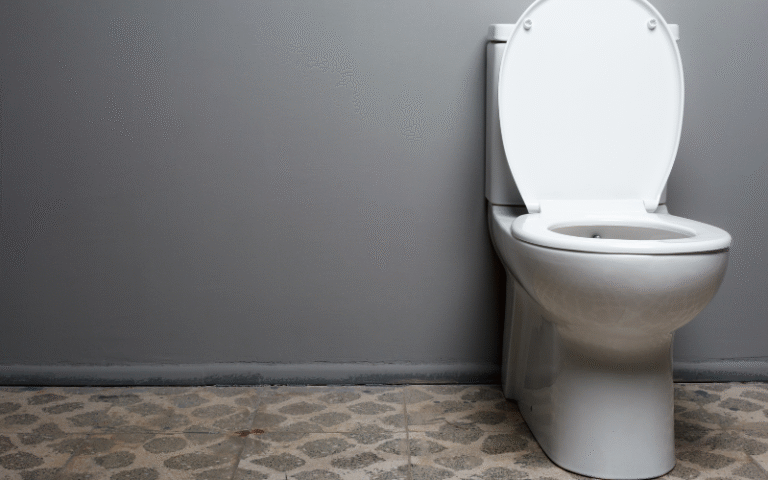How to Measure Bike Size: Find Your Perfect Fit!
To measure bike size, stand over the bike with feet flat and have 1-2 inches clearance. Measure seat height from ground to the top of the seat.
Are you in the market for a new bike but feeling overwhelmed by the various sizes available? Choosing the right bike size is crucial for your comfort and safety while riding. Properly measuring your bike size ensures a comfortable fit and enhances your overall cycling experience.
By following simple steps to determine the right bike size, you can ride with confidence and enjoy the journey ahead. Let’s explore how to measure bike size accurately and find the perfect fit for your cycling adventures.
Introduction To Bike Sizing
Discovering the right bike size is crucial for comfort and performance. To measure bike size accurately, focus on frame dimensions and adjust seat height for an optimal fit.
Finding the right bike size is crucial for a comfortable and enjoyable riding experience. Whether you are a seasoned cyclist or a beginner, having a bike that fits your body properly can make all the difference. In this article, we will explore the importance of the right bike size and the consequences of riding an ill-fitted bike. Let’s dive in!
Importance Of The Right Bike Size
Choosing the correct bike size is essential for several reasons. Firstly, it ensures proper body alignment while riding, reducing the risk of injuries and discomfort. When your bike is the right size, you can maintain an optimal riding position, which prevents strain on your joints and muscles. Secondly, the right bike size maximizes your pedaling efficiency, allowing you to generate more power with each stroke. This translates to improved performance and less fatigue during your rides.
Consequences Of An Ill-fitted Bike
Riding an ill-fitted bike can lead to a range of negative consequences. Firstly, it can result in discomfort and pain, particularly in the lower back, neck, shoulders, and knees. This can make your rides unpleasant and discourage you from cycling regularly. Additionally, an ill-fitted bike can compromise your control and handling, affecting your balance and stability. This increases the risk of accidents and injuries. Lastly, an incorrect bike size can hinder your performance and limit your potential as a cyclist.

Credit: www.bikeradar.com
Key Measurements For Bike Sizing
When it comes to finding the right bike size, there are a few key measurements you need to consider. By understanding these measurements, you can ensure that your bike fits you properly, leading to a more comfortable and efficient riding experience. Let’s explore the key measurements for bike sizing.
Inseam Length And Its Role
Your inseam length plays a crucial role in determining the right bike size for you. Measure your inseam from the top of your inner thigh to the floor. This measurement helps determine the standover height, which is the clearance between the top tube of the bike frame and your crotch when standing over the bike. A proper standover height ensures that you can safely and comfortably dismount the bike when necessary.
Reach And Stack Explained
Reach and stack are important measurements that affect your riding position and comfort. Reach refers to the horizontal distance from the bottom bracket to the top of the head tube, impacting how far you have to reach to the handlebars. Stack, on the other hand, measures the vertical distance from the bottom bracket to the top of the head tube, influencing your overall handlebar height. Optimal reach and stack measurements ensure that you can maintain a comfortable and efficient riding position.
Types Of Bikes And Size Variations
When it comes to buying a bike, it’s important to find the right size that fits you perfectly. Bikes come in various types, each with its own size variations to consider. Understanding the sizing nuances for road bikes and adjusting for terrain in mountain bikes can help you choose the right bike size for a comfortable and enjoyable riding experience.
Road Bikes: Sizing Nuances
Road bikes are designed for speed and efficiency on paved roads. To ensure a proper fit, pay attention to the following sizing nuances:
- Frame Size: The frame size is typically measured from the center of the bottom bracket to the top of the seat tube. It is crucial to choose a frame size that allows for a slight bend in your knee when the pedal is at its lowest position.
- Top Tube Length: The top tube length affects your reach and comfort while riding. A longer top tube provides a more stretched-out position, ideal for experienced riders seeking aerodynamics. In contrast, a shorter top tube offers a more upright position, suitable for beginners or those prioritizing comfort.
- Standover Height: The standover height is the distance between the top tube and the ground. It is essential to have at least a few centimeters of clearance between your inseam and the top tube to ensure safe dismounts and stops.
Mountain Bikes: Adjusting For Terrain
Mountain bikes are built to tackle challenging terrains, such as trails, mountains, and off-road tracks. While considering the size of a mountain bike, it’s crucial to make adjustments based on the type of terrain you plan to ride:
- Frame Size: Similar to road bikes, the frame size is an essential factor. However, for mountain bikes, it’s important to choose a slightly smaller frame size to enhance maneuverability and control while navigating through rough terrains.
- Suspension: Mountain bikes often come with suspension forks or full suspension systems. The amount of suspension travel varies, and it’s crucial to choose a bike with an appropriate suspension setup based on the roughness of the terrain you intend to ride.
- Handlebar Width: The handlebar width affects your control and stability while riding off-road. Wider handlebars provide better control, especially on technical descents, whereas narrower handlebars offer improved aerodynamics and maneuverability.
- Tire Size: The tire size plays a significant role in determining the bike’s ability to handle different terrains. Wider tires provide more traction and stability on rough trails, while narrower tires offer less rolling resistance for smoother surfaces.
By understanding the sizing nuances for road bikes and adjusting for terrain in mountain bikes, you can confidently choose the right bike size that suits your riding style and preferences. Remember, a properly fitted bike enhances comfort, performance, and overall riding experience.
Tools And Equipment For Measuring
Discover the essential tools and equipment needed to accurately measure the size of a bike. From tape measures to sizing charts, ensure a perfect fit for your cycling needs. Get the right measurements for a comfortable and enjoyable biking experience.
When it comes to measuring the size of a bike, having the right tools and equipment is essential. Whether you’re a professional cyclist or a casual rider, accurate measurements are crucial for ensuring a comfortable and efficient riding experience. In this section, we will explore two main methods of measuring bike size: using a bike size chart and DIY measurement methods. Let’s dive in!
Using A Bike Size Chart
A bike size chart is a handy tool that provides a quick and easy way to determine the appropriate bike size based on your height and inseam measurement. Here’s how you can use a bike size chart to find the perfect fit:
1. Measure your height: Stand against a wall without shoes and measure from the floor to the top of your head.
2. Measure your inseam: Stand with your back against a wall, wearing your cycling shoes. Place a book between your legs, snug against your groin, and measure from the top of the book to the floor.
3. Consult the bike size chart: Look for your height and inseam measurement on the chart to find the corresponding bike size recommendation.
4. Consider the bike type: Different types of bikes may have slightly different sizing recommendations. Take into account the specific type of bike you are looking to purchase.
Using a bike size chart can be a convenient way to determine your bike size, especially if you’re buying online or don’t have access to a physical store for a test ride.
Diy Measurement Methods
If you prefer a more hands-on approach or want to double-check the measurements, you can also use some simple DIY methods to measure your bike size. Here are a few techniques you can try:
1. Standover height: Straddle the bike with your feet flat on the ground. Ensure there is a minimum of one inch of clearance between the top tube of the bike frame and your inseam measurement.
2. Reach measurement: Sit on the bike and reach for the handlebars. Your arms should have a slight bend at the elbows, and you should be able to comfortably grip the handlebars without feeling stretched or cramped.
3. Saddle height adjustment: Adjust the saddle height so that when your foot is at the bottom of the pedal stroke, your leg is almost fully extended with a slight bend at the knee.
4. Test ride: Take the bike for a short test ride to assess its overall comfort and fit. Pay attention to any discomfort or strain in your back, neck, shoulders, or wrists.
By following these DIY measurement methods, you can fine-tune the fit of your bike and ensure optimal comfort and performance.
Remember, accurate bike sizing is crucial for your safety and enjoyment while riding. Whether you choose to use a bike size chart or try the DIY measurement methods, taking the time to find the right bike size will greatly enhance your cycling experience. So, grab your measuring tools and get started on finding your perfect bike fit!
Step-by-step Guide To Measuring Your Bike Size
When it comes to enjoying a comfortable and efficient ride, getting the right bike size is crucial. Here’s a step-by-step guide to measuring your bike size to ensure a perfect fit.
Measuring Your Inseam
1. Stand with your back against a wall and spread your feet about 6 inches apart.
2. Place a book between your legs, ensuring it is snug against your groin.
3. Measure from the top of the book to the floor to get your inseam length.
Determining The Right Frame Size
- Using your inseam measurement, find the appropriate frame size using a bike size chart.
- For road bikes, multiply your inseam by 0.67 to get the frame size in centimeters.
- For mountain bikes, multiply your inseam by 0.59 to get the frame size in inches.

Credit: www.omnicalculator.com
Adjustments For Comfort And Efficiency
To measure bike size for comfort and efficiency, start by adjusting the saddle height to ensure a slight bend in the knee when the pedal is at the lowest position. Then, set the saddle fore-aft position and handlebar height to achieve a comfortable riding position.
Finally, check the reach to the handlebars for the right fit.
Adjustments for Comfort and Efficiency
Fine-Tuning Saddle Height
When riding a bike, the saddle height plays a crucial role in ensuring comfort and efficiency. An improperly adjusted saddle can lead to discomfort and decreased performance. To find the ideal saddle height, place your heel on the pedal at its lowest position. Your leg should be fully extended with a slight bend in the knee. This position ensures optimal power transfer and minimizes the risk of injury. Once you’ve found the correct height, use a wrench to secure the seat post clamp and prevent it from slipping during rides.
Handlebar Adjustments for Better Control
The handlebar position greatly impacts your control and comfort while riding. To optimize the handlebar height, sit on the bike with your hands on the grips. Your upper body should be at a comfortable angle, neither too stretched nor too compact. Adjust the stem length and angle to achieve the desired position. Additionally, make sure the handlebars are aligned with the front wheel to ensure proper steering. These adjustments promote better handling, reduce strain on the upper body, and enhance overall riding experience.
Common Mistakes To Avoid In Bike Sizing
When measuring bike size, it’s crucial to avoid common mistakes to ensure a comfortable and efficient ride. Taking accurate measurements of your inseam, height, and reach will help you find the right bike size and avoid discomfort or injury. Pay attention to frame size, saddle position, and handlebar adjustments for a proper fit.
Ignoring The Top Tube Length
Top tube length is crucial for a comfortable riding position.
Long top tubes can cause discomfort and stretching.
Forgetting About Riding Style
Consider your riding style when choosing a bike size.
Different styles require different frame geometries.
When To Seek Professional Help
When to Seek Professional Help:
Benefits Of A Professional Bike Fit
A professional bike fit optimizes comfort and performance.
Finding A Reputable Bike Fitter
Research reviews and credentials of potential bike fitters.
Frequently Asked Questions
How Do I Measure My Bike Size?
To measure your bike size, you need to measure your inseam length and match it with the bike frame size. Stand with your back against the wall and measure the distance from the floor to your crotch. This will give you your inseam length, which you can then use to determine the correct frame size.
What Size Bike Do I Need For My Height?
The bike size you need for your height depends on your inseam length. Generally, if you’re between 5’4” to 5’7”, you’ll need a small frame (15 to 16 inches). If you’re between 5’8” to 5’11”, you’ll need a medium frame (17 to 18 inches).
If you’re between 6’0” to 6’3”, you’ll need a large frame (19 to 20 inches).
Can I Ride A Bike That’s Too Small?
Riding a bike that’s too small can cause discomfort and pain, especially in your knees and back. It can also affect your balance and control, making it harder to ride safely. It’s important to choose the right size bike for your body to ensure a comfortable and safe ride.
Can I Ride A Bike That’s Too Big?
Riding a bike that’s too big can also cause discomfort and pain, as you’ll need to stretch and reach further to reach the handlebars and pedals. It can also make it harder to control the bike, especially when turning or stopping.
It’s important to choose the right size bike for your body to ensure a comfortable and safe ride.
Conclusion
To ensure a comfortable and safe ride, it’s crucial to measure your bike size accurately. Keep in mind that the right size varies depending on your body type and riding style. Take the time to measure your bike correctly and make necessary adjustments to achieve the perfect fit.
Remember, a well-fitted bike can enhance your cycling experience and prevent potential injuries. So, grab a tape measure and get started on finding your ideal bike size today!







